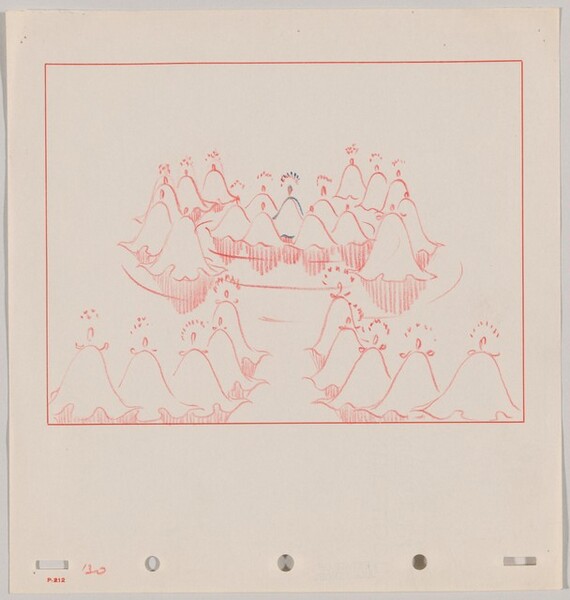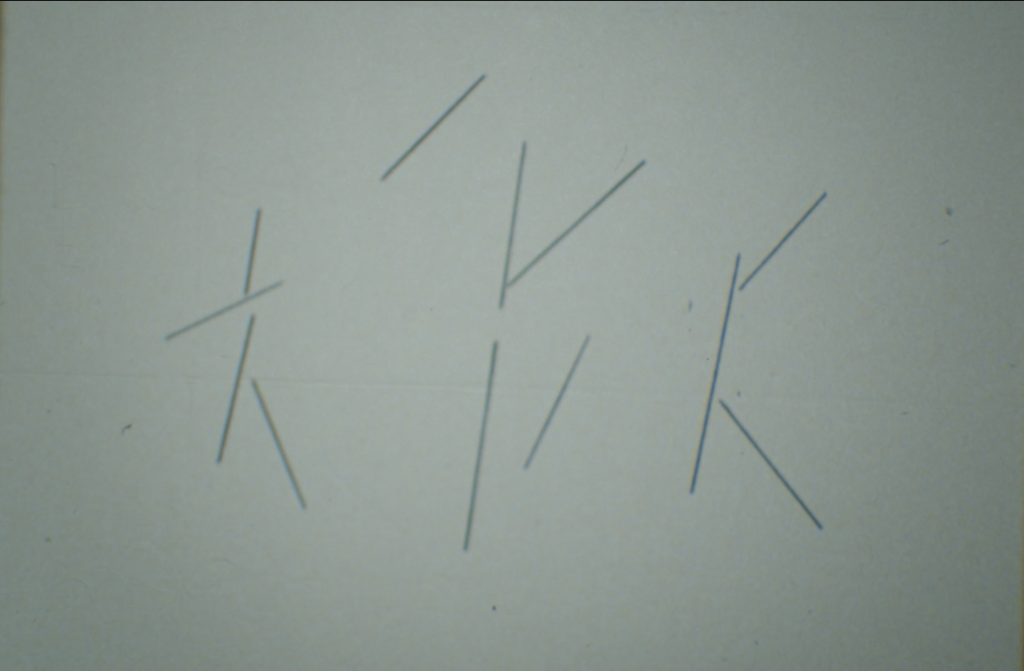The artist, animator, and educator Jules Engel is perhaps best known for his work as an Art Director at the beloved United Productions of America (UPA), or maybe later for his role as the first director of the Experimental Animation program at the California Institute of the Arts (CalArts). However, his most intriguing contribution to animation comes from his demonstration of an approach that unites various creative pursuits under the banner of choreography and, as I contend, care.

Engel reportedly took an interest in animation because of his exposure to the Ballet Russe de Monte Carlo. Although employed as an apprentice at the studio of Charles Mintz, Engel was invited to work on scenes from Disney’s Fantasia (1940) because, unlike many of the anti-intellectual animators at Disney and Mintz, Engel took an interest in the art of dance and choreography.[i] In the parts of the Nutcracker Suite sequence, it was Engel’s idea to leave animated figures against a black background, anticipating some of his later work in minimalist midcentury modernist design at UPA. His independent and experimental works began with films like Coaraze (1965), The Ivory Knife (1965), Accident (1973) and Train Landscape (1974), which document the creative work of others and reference the educational context of the animation classroom. However, other works point to his interest in dance more explicitly with titles like Shapes and Gestures (1976) and Dance/Lines in Space (1987).
Engel makes a point of calling all his work “graphic choreography,” a telling connection to dance that sidesteps other well-known labels such as dance film or cine-dance.[ii] However, Engel’s connection to dance does not involve collaboration with dancers or recording dancers in motion, which was more typical for experimental animators. This approach is most memorably on display in Norman McLaren’s well-known Pas de Deux (1968), but also in the work of fellow CalArts faculty Ed Emshwiller. Although completed before his time at CalArts, where he served as the Dean of the School of Film and Video from 1979 to 1990, Emshwiller experimented with dance in films like Dance Chromatic (1959), Totem (1963), and Relativity (1966) by collaborating with dancers and manipulating their recordings through double exposure. Unlike Engel’s careful approach to documenting other artists, Emshwiller and McLaren’s films intentionally subject the movement and choreography of dancers to formal experiments with overlays and manipulation through optical printing, something Engel consciously avoided. While there may be more prominent figures associated with dance film–Maya Deren comes to mind–the aforementioned filmmakers were all featured alongside Engel’s work on Fantasia in the television production, The Film Generation on Dance by the National Educational Television network in 1968.[iii] Their joint appearance in this omnibus production both suggests and troubles the inclusion of drawn animation in the category of dance film. As reported in The Film Generation on Dance, Emshwiller’s turn to dance was a way to involve people, while for McLaren, the key to dance film was working with light and cameras to manipulate performed movement. By contrast, Engel’s approach in Fantasia as well as in films like Shapes and Gestures and Dance/Lines in Space was to evoke the performed movement of the body in its absence. The term choreography better describes what Engel’s films seek to do in choreographing, that is, planning, notating, and ultimately directing the movement through film graphics, as if the performance itself were only potential.
Unlike the dance film that depends on performers or camera movements, Engel’s term “graphic choreography” suggests a rapprochement between the animation and dance based on another shared format: the musical or performance score. To explain, Engel’s works were not set to a musical score or predefined rhythm but based on his own internal sense of timing. Engel would then hand over the film, like a score, to composers. If he did not like what the composer did, he would simply find another and try again.[iv] The stakes of approaching a film this way–as graphic text and record of performed action–is to see the dependencies (sometimes conflictual, though still caring relationships) between what we see and what we hear, for instance, or what we know conceptually and experience phenomenologically. The film becomes both a score and a document of a second order design that has taken place between Engel and his musical collaborators.
This places the films along a continuum of ephemeral instructions and material record. However, in addition to the spectrum of materiality and ephemerality, considering graphic choreography’s intermediality in terms of both document and score expands our ability to think about experimental film as a contingent set of once existing and future relationships, decentering the prevalent emphasis in discussions of experimental film on individual creators and singular aesthetic experiences, while aspiring not to a kind of synesthesia or perfect hybridity. For this reason, Engel’s term “graphic choreography” is a stand in for the kind of caring relationship to the other arts, which he carried with him throughout his career.
[i] Jules Engel, interview by Lawrence Weschler and Milton Zolotow, Los Angeles, 30 December 1977, transcript, University of California, Los Angeles, Oral History Program, 17.
[ii] Jules Engel, “Teaching Animation,” 2009, https://www.michaelspornanimation.com/splog/?p=1944 (originally published in Millimetre 14, 1976).
[iii] The Film Generation on Dance, directed by Perry Miller Adato (1968, New York City: National Educational Television), DVD.
[iv] Jules Engel, “The Graphic Films of Jules Engel” (screening program, Pacific Film Archives, Berkeley, CA, October 11, 1977), https://archive.org/details/bampfa-audio_03546.
Tim Ridlen is Associate Teaching Professor at the University of Tampa in the department of Film, Animation, and New Media. He is the author of Intelligent Action: A History of Artistic Research, Aesthetic Experience, and Artists in Academia published by Rutgers University Press (2024). His current research focuses on intermedia art with a particular interest in the intersections of dance, performance, and experimental film and video.


